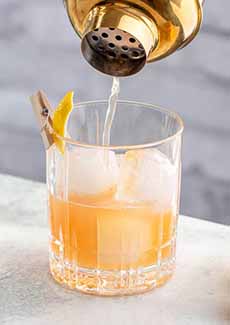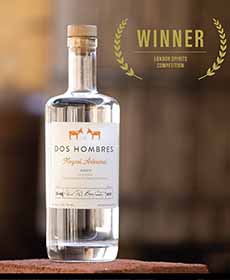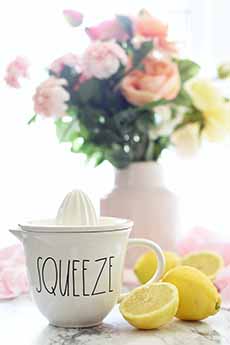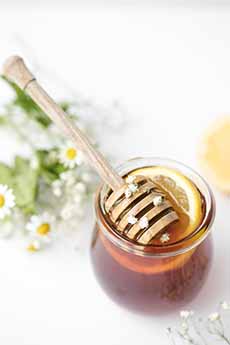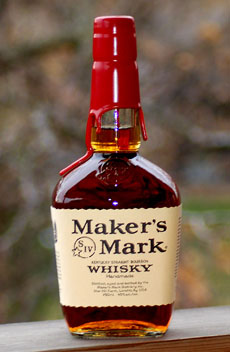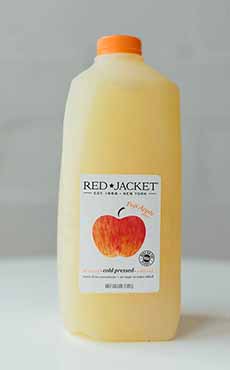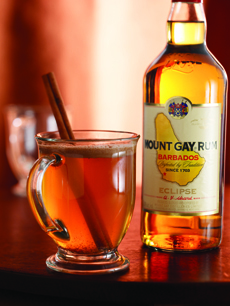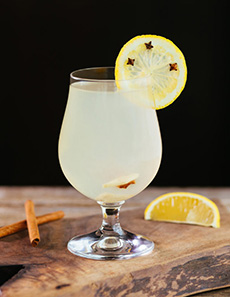A Honey & Mezcal Hot Toddy Recipe For National Honey Month
|
We didn’t want to let the clock run out on National Honey Month (September) without a special honey recipe. We found it in this honey and mezcal cocktail recipe, “Naughty Toddy,” from Dos Hombres Mezcal. The brand was co-founded by actors Aaron Paul and Bryan Cranston (the dos hombres) along with third-generation mezcalero Gregorio Velasco. The mezcal is made in the heart of mezcal country, San Luis del Rio, Oaxaca, Mexico at the same traditional palenque (mezcal distillery) where Gregorio’s ancestors have been making mezcal for many decades. The brand currently makes two expressions, both 100% agave: > Here are alcoholic drinks related to the Hot Toddy. > National Mezcal Day is October 21st. > January 11th is National Hot Toddy Day. We’re not sure why this toddy is naughty, but you can make it hot or cold. What if you can’t get ahold of mezcal? You can substitute tequila, but you’ll miss out on the wonderful smoky notes of mezcal ( The difference between mezcal and tequila). Hot Toddy: Combine all ingredients into a small pot and heat on the stovetop. Use caution when pouring into a coffee cup as the cocktail will be hot. Garnish with a lemon wheel. Cold Toddy: Add all ingredients to a mixing glass. Shake and strain into a rocks glass filled with ice. Garnish with a lemon wheel. Around 1600 in India, the Hindi word tārī (pronounced taddy) referred to an alcoholic beverage made from fermented palm sap. The modern hot toddy began in 1608, when the British landed in India for the purpose of trade, and discovered the drink. By 1610, the spelling “taddy” had appeared [source]. By 1786, the term evolved such that a written recipe for taddy defined it as a “beverage made of alcoholic liquor with hot water, sugar, and spices” [source]. In the cold and damp winters of the British Isles, a hot drink was welcome. The taddy was heated and the terms Hot Toady and Hot Toddy evolved. Hot alcoholic drinks had existed in England for centuries, if not millennia. During the reign of King Richard III (1483 to 1485), for example, people drank: Hot Toddy In The Colonies In the Colonies, rum from the Caribbean and locally-made brandy‡ were the spirits used in toddies (rum was a lot more convenient to import than Scotch). A rum toddy made with butter was known as hot buttered rum. Butter made the drink richer. Just about every family had its own recipe for hot buttered rum. A batter was made from butter, sugar, and spices, and was stirred into a mix of rum and hot water [source]. Two Spoilers Beyond the history of the taddy from India, there are two more “origin stories” for the hot toddy. Thanks to Adagio Teas for the information. By the mid-19th century, the hot toddy was prescribed as medicine for the common cold and other conditions. It was touted as a cure-all for everyone—even for sniffling children [source]! So does a hot toddy really help with colds? Yes! Medical professionals agree that a hot toddy can be good for colds and mild respiratory congestion. Both the Common Cold Centre at Cardiff University in the U.K. and the Mayo Clinic in the U.S. have cited that: (Stress: is that the same as misery?) *The copal’s resinous oils perfume the soil and find their way into the agave plants. The name “copal” derives from the Aztec (Nahuatl) word copalli, meaning “incense.” The Aztecs and other groups created incense from the oils and burned it for ceremonies. It’s still used ceremonially by a number of indigenous peoples of Mexico and Central America. †While in the U.S. and parts of Canada, the term “apple cider” is interchangeable with “apple juice,” in Europe a glass of cider is an alcoholic drink. ‡Brandy is a distilled spirit produced from fermented fruit. For a home hack, the alcohol in wine can be distilled into brandy by heating the wine to just over 173°F. |
|
|
|
CHECK OUT WHAT’S HAPPENING ON OUR HOME PAGE, THENIBBLE.COM.
|
||
